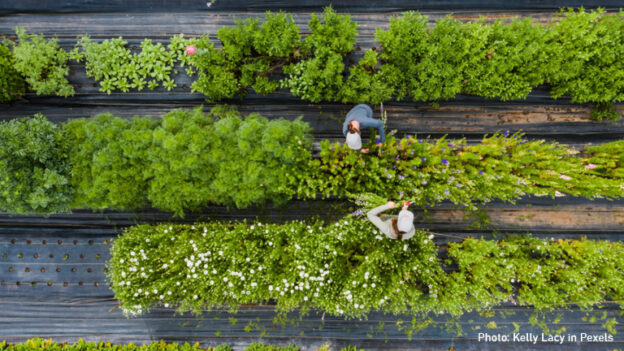Although organic farming has been around since the 1960s[1] (Pinton and Zanoli, 2000), it is not until the mid-1980s that it grew significantly, and in the 1990s when it experienced a breakthrough in Europe. (Foster and Lampkin 1999a, 1999b). The reasons are the growing public interest in organic farming, political support, increased consumer demand, animal health, food safety and economic problems in the conventional agricultural sector.
Labels emerged as a means to avoid confusion between products from different production practices and as a basis for the development of organic farming in society (Michelsen, J. 2001)
As a result of this new way of producing, European countries are forced to create rules to regulate the situation.
For example, France was the first country to recognize organic farming in the political context with the Agricultural Law No. 80502 in 1980; and they introduced the first eco-label for organic products four years later.
For its part, in Austria, the initiative for the regulation of organic products appeared in 1983, with the Austrian Codex Alimentarius (Michelsen et al., 2001). Denmark, in 1987, introduced the criteria and public certification of organic production.
Thus, before 1991 most of the current EU countries (except Greece) had regulated organic farming.
The European Union was quick to introduce a series of norms (EU Regulation 2092/91, in 1999 supplemented by common rules for organic livestock production: EU Regulation 1804/99); as well as financial support for those farmers who took advantage of the measures that accompanied the Common Agricultural Policy (CAP).
Starting with the 1992 CAP reform, with the introduction of a broad support program (EC Reg. 2078/92), these measures were intensified with the following CAP reforms, currently reaching strong growth and dynamic important in agricultural production and in the food market.
The objective of these regulations was to encourage farmers and ranchers in the Member States to offer a subsidy scheme to convert or maintain agricultural production methods, causing positive effects on the environment.
And thanks to these regulations, the increase in organic farming has reached almost 13.8 million hectares, representing 8.5% of total agricultural land (2019; EUROSTAT, 2021; Figure 1); mostly represented in the states of Austria (25.3%), Sweden (20.4%) and Estonia (22.3%); in contrast to the easternmost countries of Europe, Norway (4.6%), the United Kingdom (2.6%) and Ireland (0.4%).

References
Padel and Lampkin, 2007. The Development of Government Suppot for Organic Farming in Europe. In: Organic Farming. An International History. Cabi (Edit);
Michelsen J. 2001. Recent development and political acceptances of organic farming in Europe. Sociology Ruralis. 41. 3-19;
Pinton, R., Zanoli., R. 2000. Organic farming in Italy. http://www.organic-europe.net, 30.3.2000. Stiftung Ökologie & Landbau (Edit).Link
[1] Some authors highlight the importance of Italy as a pioneer in the development of organic farming

Thanks for sharing this useful information! Hope that you will continue with the kind of stuff you are doing.